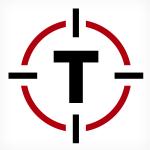Making the Most of Disruption in Media: An Isenberg Graduate Shows How
April 28, 2016

Eric has devoted most of his career to the rapidly evolving media industry. Before joining Thrillist as its CFO in 2011, he was Huffington Post’s CFO for two years until its sale to AOL in 2011. Before that, he was CFO of TheStreet.com (2006-2009), and COO and CFO of Text 100 Public Relations (1997-2006). An Isenberg accounting graduate, he began his career as a tax and audit supervisor and manager with prominent public accounting firms.
Disruptive Trends
Two interrelated trends that are disrupting the media landscape, noted Eric, are the rapid unbundling of cable TV packages and the expanding footprint of mobile media. “Marketing used to be so easy with 50 million viewers and three major networks,” he mused. “Today, nearly half of the millennials don’t own a TV and half of them check their [smart] phones at least once every half hour.”
Ad dollars, he continued, are gravitating toward mobile media at the expense of traditional linear TV, radio, print, and, traditional digital media. There’s been a wide gap between audience time spent on mobile and digital ad dollars spent on traditional websites built for the desktop. That’s largely because traditional marketers have been more familiar with campaigns grounded in big display ads. That gap is now closing rapidly, he said, driven by the accelerating generational shift of media consumption on mobile devices.

Research Yields Action
With ad dollars increasingly migrating toward mobile, Thrillist has rededicated itself to measuring and researching what works and what doesn’t in that medium. Over 60% of mobile ad clicks, noted Eric, are “click-fraudulent” or accidental clicks by the reader. A second, fundamental, challenge is getting past the industry’s reliance on valuing clicks as ends unto themselves. Instead, Thrillist has developed sophisticated algorithms and metrics that target readers’ purchasing behavior. “From our research, we’ve learned that 97% of our readers intend to act on a Thrillist recommendation,” he told the students. “For us, that is critical. After all, we’re a recommendation publication. Acting on those recommendations is the connection that confirms the effectiveness of our branded content programs for our advertisers.”
In these disruptive markets, you are all entrepreneurs.
Thrillist also insists on unambiguous separation between the editorial team and the branded content team that creates content for advertisers. Muddying those waters, noted Eric, “would diminish our credibility with our readers.” Sharing a traditional display ad from a recent campaign of a large retailer that had been published on Instagram by a paid influencer, he observed: “This is an ad that doesn’t denote itself as an ad. Without full disclosure, it is misleading to the reader.”
Thrillist’s In-house Agency
To leverage best practices, Thrillist runs its own internal agency, The Colab. “You can’t just outsource a lot of this stuff,” Eric insisted. The Colab’s branded content and ad campaigns follow from painstaking research that yields a systematic understanding of clients’ brands and markets. From there, it creates narratives and campaigns that emphasize creativity and integrity while minimizing needless consumer distractions. “Our programs outperform 90% of the measured digital campaigns in driving purchase intent,” he emphasized. “We owe much of that to research.
“For all practical purposes, we’re a ten-year-old start-up,” Eric continued. “In these disruptive markets, you are all entrepreneurs,” he told the students. “Just like us, you have to figure things out.”